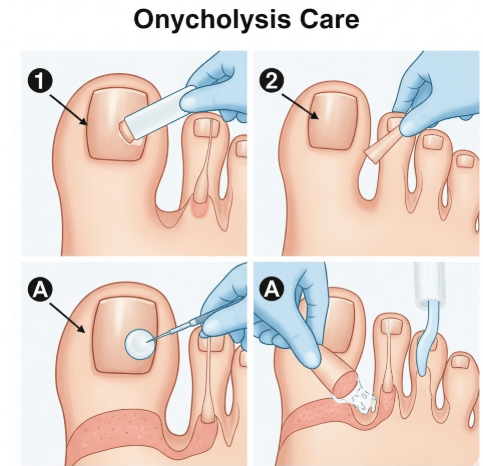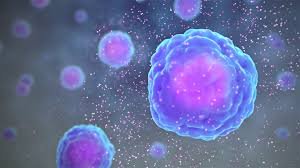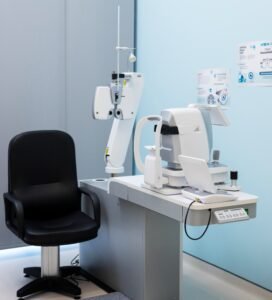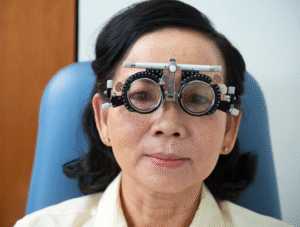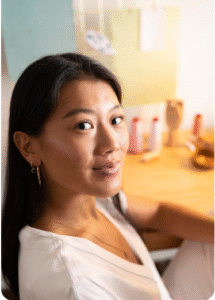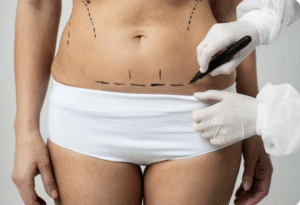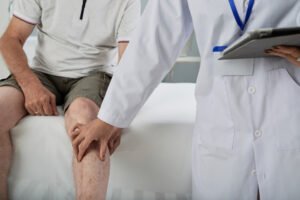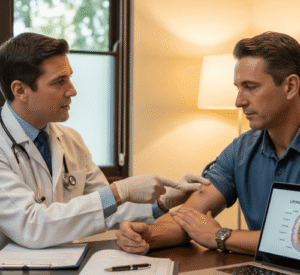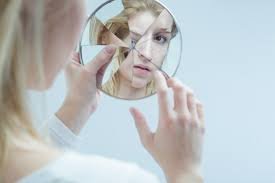What It Is
Defining Onycholysis
→ Onycholysis is a nail disorder where the nail plate separates from the underlying nail bed, starting at the free edge and progressing backward.
→ It appears as a white or yellowish gap between the nail plate and nail bed.
→ While usually painless, it can become uncomfortable or lead to secondary infections, nail deformities, and cosmetic distress if untreated.
→ In Korea, dermatologists provide structured nail care programs combining medical evaluation, topical/oral therapy, lifestyle modification, and cosmetic support.
Key Characteristics
- White or opaque discoloration beneath nail tip
- Lifting of nail plate away from bed
- Possible pain, foul odor, or secondary infection
- May affect one or multiple nails (hands or feet)
Why It’s Done
Main Reasons for Onycholysis Care
➡ Prevent Infection – Detached nail spaces harbor bacteria or fungi.
➡ Relieve Discomfort – Lifting nails can snag, break, or cause pain.
➡ Cosmetic Restoration – Nail discoloration and deformity cause embarrassment.
➡ Identify Underlying Causes – Onycholysis may indicate thyroid disease, psoriasis, fungal infection, or trauma.
➡ Preserve Nail Function – Early care prevents permanent damage to nail bed and plate.
Alternatives
Non-Medical Options
- Protective Nail Trimming → Keep nails short to prevent further detachment.
- Avoid Irritants → Limit exposure to detergents, nail polish removers, and chemicals.
- Gloves for Household Work → Reduce trauma and moisture exposure.
- Moisturization → Oils and creams help reduce brittleness.
Medical Alternatives
→ If structured care not available, treatment may include:
- Topical Antifungals → For fungal onycholysis.
- Oral Antifungals → In resistant or widespread cases.
- Topical Steroids → If caused by psoriasis or eczema.
- Oral Medications → Thyroid or systemic disease management.
- Nail Surgery → Rarely, avulsion of severely damaged nails.
Preparation
Before Onycholysis Care in Korea
➡ Medical History Review – Includes trauma, manicures, medications, systemic disease.
➡ Physical Exam – All nails examined for pattern and distribution.
➡ Lab Tests – KOH exam, fungal culture, blood tests (thyroid, iron, autoimmune markers) if indicated.
➡ Lifestyle Review – Nail habits, cosmetic use, sports, footwear.
➡ Counseling – Patients informed that nails regrow slowly:
- Fingernails → 4–6 months
- Toenails → 12–18 months
How It’s Done
Standard Onycholysis Care in Korea
1. Treat Underlying Cause
- Fungal Infection → Topical or oral antifungals.
- Psoriasis or Eczema → Topical steroids, vitamin D analogs, systemic therapy if severe.
- Thyroid Disease → Endocrine management improves nail attachment.
- Trauma-Induced → Protective trimming, footwear adjustments.
2. Nail Trimming and Debridement
- Detached portion carefully trimmed and cleaned.
- Korean clinics use gentle nail drills and cosmetic shaping to restore natural look.
3. Topical Medications
- Antifungal solutions or medicated lacquers applied directly.
- Anti-inflammatory creams if inflammatory skin disease involved.
4. Oral Medications
- Antifungals for widespread fungal onycholysis.
- Systemic psoriasis treatments or biologics if nail psoriasis is cause.
5. Cosmetic and Supportive Care
- Medical-grade nail polishes used to camouflage discoloration.
- Breathable protective nail overlays in cosmetic dermatology clinics.
- Laser therapy (Nd:YAG, fractional) sometimes used for fungal clearance or nail bed stimulation.
6. Lifestyle and Prevention Counseling
- Avoid tight shoes, harsh manicures, repeated trauma.
- Use non-acetone removers and gentle nail cosmetics.
- Maintain balanced diet with adequate iron, biotin, and protein.
Recovery
Immediate Recovery
- Relief from discomfort after trimming and debridement.
- Cosmetic improvement visible quickly with overlays or medical polish.
Long-Term Recovery
→ Nail reattachment only occurs as new nail grows:
- Fingernails: 4–6 months
- Toenails: 12–18 months
→ With consistent care, nails grow smoother, healthier, and stronger.
→ Korean clinics emphasize follow-up visits to track progress and adjust treatment.
Complications
Risks Without Proper Care
- Persistent Onycholysis → Nail may never reattach fully.
- Secondary Infections → Fungal or bacterial infections worsen damage.
- Permanent Nail Deformity → Nail bed scarring leads to chronic irregular nails.
- Missed Diagnosis → Underlying thyroid disease or psoriasis may be overlooked.
Risks With Treatment
- Medication Side Effects → Oral antifungals may affect liver.
- Topical Irritation → Rare, from medicated lacquers or creams.
- Recurrence → If trauma or systemic disease persists.
- Cosmetic Sensitivity → Nail polishes may trigger irritation in some patients.
Treatment Options in Korea
Why Korea Excels in Onycholysis Care
➡ Accurate Diagnosis – Use of fungal PCR, dermoscopy, and blood tests.
➡ Advanced Cosmetic Integration – Medical + beauty care combined for appearance restoration.
➡ Laser Therapy Availability – For fungal treatment and nail regrowth stimulation.
➡ Innovative K-Beauty Nail Products – Breathable nail polishes, serums, and keratin treatments.
➡ Patient Education – Clinics provide detailed nail care counseling to prevent recurrence.
Patient Experience in Korea
- Outpatient visits with comprehensive exam and trimming.
- Patients receive customized nail care kits (serums, antifungal lacquer, gentle cleansers).
- Cosmetic dermatology clinics offer camouflage polish or overlays for confidence during recovery.
- Follow-ups every 1–2 months to monitor regrowth.
Conclusion
Onycholysis care in Korea is a comprehensive, patient-centered approach designed to restore nail attachment, function, and appearance.
Through a combination of accurate medical evaluation, antifungal or anti-inflammatory treatments, cosmetic restoration, and lifestyle counseling, Korean dermatologists ensure both short-term comfort and long-term nail recovery.
Korea’s strengths in medical dermatology, cosmetic nail care, and patient education make it one of the leading destinations for nail disorder management worldwide.
For patients struggling with lifting, discolored, or brittle nails, Korea offers reliable, advanced, and holistic care programs that restore both health and confidence.

